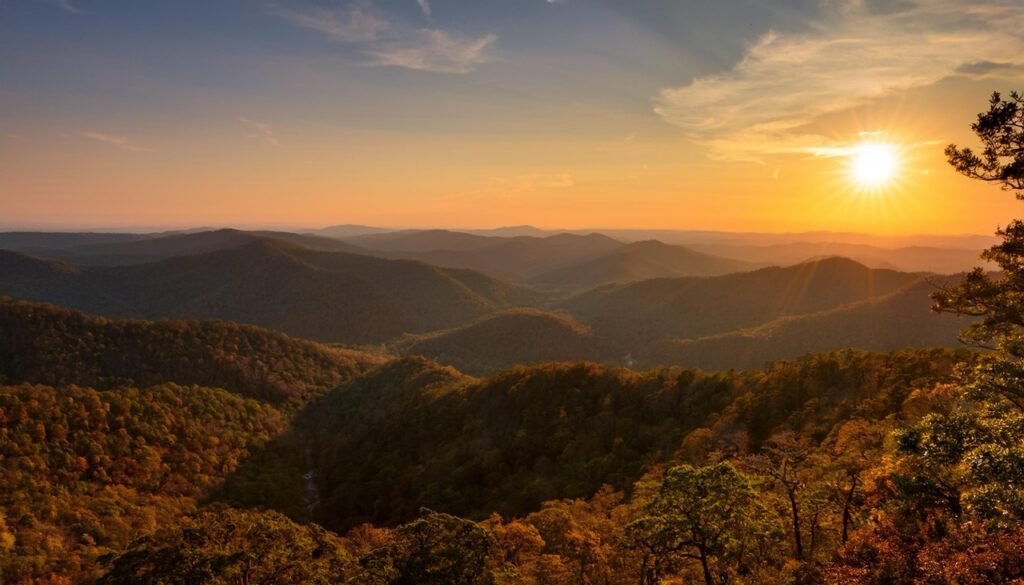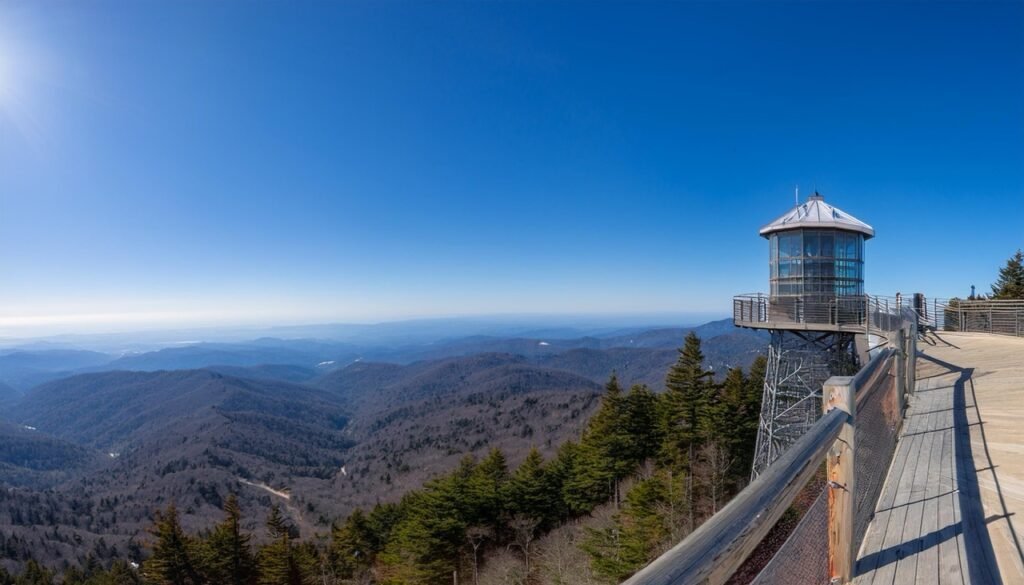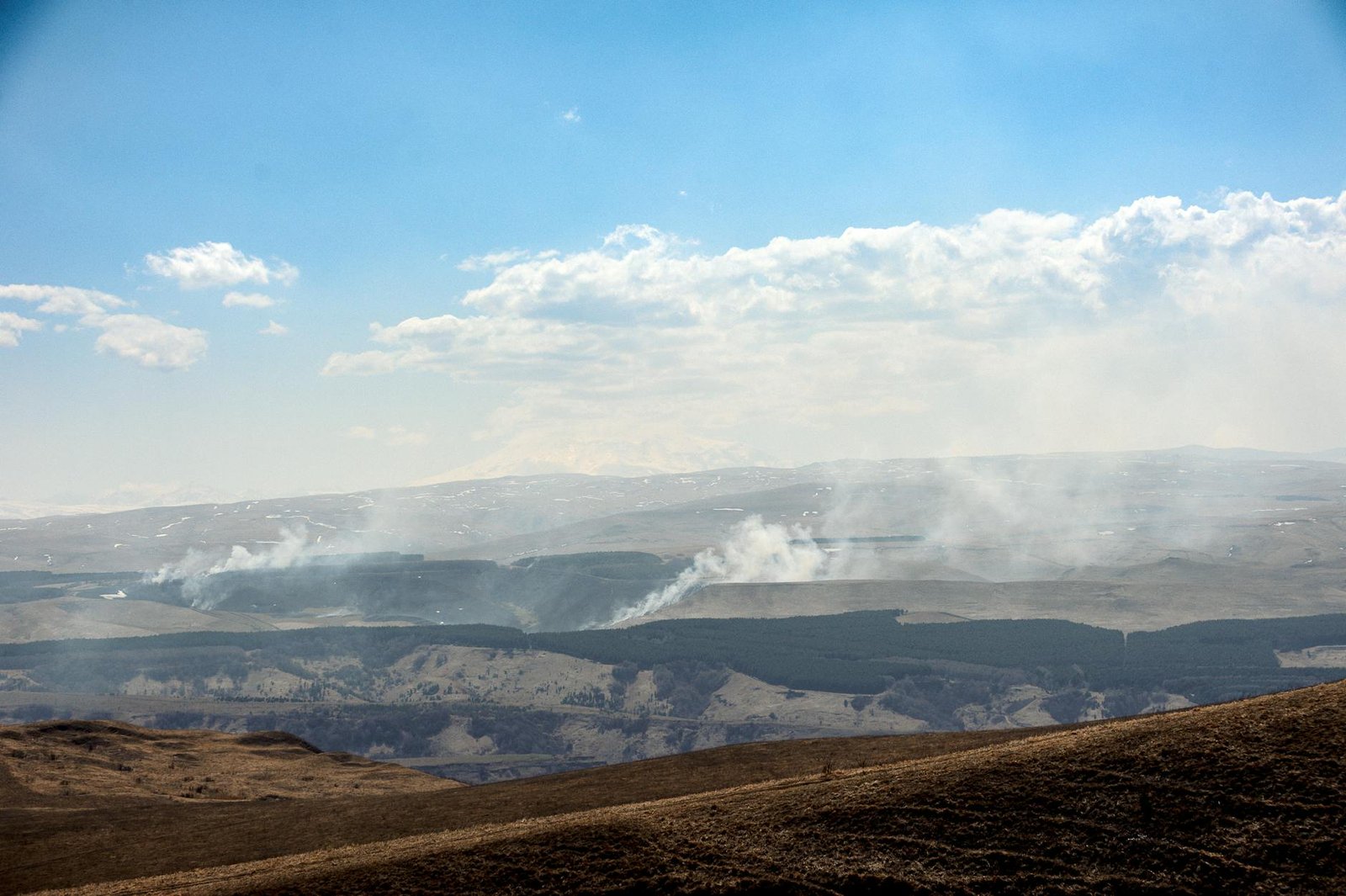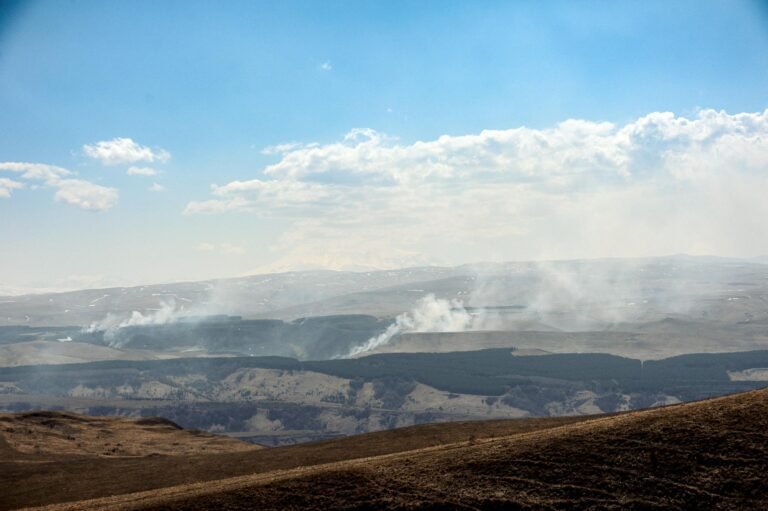The Great Smoky Mountains Overlooks

The Great Smoky Mountains National Park is a gem of natural beauty and adventure, drawing millions of visitors every year. Let’s dive into what makes this park incredible and the scenic drives that showcase its charm.
Park Snapshot
Right between North Carolina and Tennessee, the Great Smoky Mountains National Park covers a whopping 522,419 acres. It’s a place teeming with life, ancient hills, and a taste of Southern Appalachian culture. No matter when you visit—be it the colorful fall or the peaceful snow-covered winter—you’ll find something that leaves you in awe.
There are about 384 miles of road here, leading you to all the go-to spots for the best views. And with over 800 miles of hiking trails, including part of the Appalachian Trail, you’ll be neck-deep in stunning scenery.
The Scenic Drives
Driving through the Great Smoky Mountains National Park is a chill yet awesome way to check out its diverse landscapes. Here are some routes worth taking for jaw-dropping views and memorable stops:
Newfound Gap Road (U.S. 441)

This road, also called U.S. 441, is one of the park’s main arteries. Taking you from Cherokee, North Carolina, to Gatlinburg, Tennessee, it cruises right through the park’s core. Along the way, you’ll hit up some sweet spots:
- Campbell Overlook: Just 2 miles from the Sugarlands Visitors Center, you get epic views of Mt. LeConte, Balsam Point, and Bullhead (Pigeon Forge).
- Morton Overlook: This spot has killer views of the mountains leading into the Tennessee Valley, perfect for sunrise or sunset shots.
- Clingmans Dome: The high point on the Appalachian Trail within the park, offering 360-degree views. A steep half-mile walk up to an observation tower rewards you with a panorama.

Cades Cove Loop Road
An 11-mile scenic drive, Cades Cove Loop Road circles through a pristine valley. It’s a hotspot for seeing wildlife, old-timey cabins, and amazing mountain views. History buffs and nature lovers will find this spot hard to beat. Check out more in our article on cades cove smoky mountains.
Roaring Fork Motor Nature Trail

This 5.5-mile one-way drive snakes through a lush forest, glides past streams, and shows off historic sites. It’s a quieter, more serene way to soak in the Smokies.
| Roadway | Noted Overlooks | Length |
|---|---|---|
| Newfound Gap Road | Campbell Overlook, Morton Overlook, Clingmans Dome | 33 miles |
| Cades Cove Loop Road | Loads of wildlife and historic sites | 11 miles |
| Roaring Fork Motor Nature Trail | Streams, old cabins, forest scenery | 5.5 miles |
Cruising these scenic routes not only gives you access to the best great smoky mountains overlooks but also lets you savor the park’s diverse habitats at your own pace. Always keep an eye out for wildlife and stick to the park’s safety rules during your visit (smoky mountains visitor guide).
Amazing Spots You Can’t Miss
Check out these must-see spots in the Great Smoky Mountains that offer some of the most breathtaking views ever. You gotta hit Campbell Overlook, Morton Overlook, and Clingmans Dome. Seriously, don’t leave without seeing them.
Campbell Overlook
At Campbell Overlook, you’re greeted with jaw-dropping views of Mt. LeConte, Balsam Point, and Bullhead. Just 2 miles from Sugarlands Visitor Center on U.S. 441/Newfound Gap Road, it’s a super convenient stop for anyone cruising through the park. Worth noting, trust me.
| Amazing View | From Sugarlands Visitor Center |
|---|---|
| Mt. LeConte, Balsam Point, Bullhead | 2 miles |
Want more nearby spots? Check out our guide on Great Smoky Mountains sightseeing.
Morton Overlook
Morton Overlook on Newfound Gap Road is famous for its epic views of the mountains rolling into the Tennessee Valley. It’s THE place for catching unreal sunrises and sunsets. Perfect for photographers and nature junkies alike (My Pigeon Forge).
| Highlight | Best Time to Be There |
|---|---|
| Tennessee Valley View | Sunrise/Sunset |
Clingmans Dome

Clingmans Dome is the highest point on the Appalachian Trail in the Smokies, offering jaw-dropping 360-degree views. A quick, but steep, half-mile hike gets you to the observation tower at the top. Totally worth the climb for those views.
| Spot | Tower Hike Distance |
|---|---|
| Highest Point in Smokies | Half-Mile Hike |
Want to learn more? Dive into our piece on the Clingmans Dome Trail for deeper insights.
From Campbell Overlook to Morton Overlook, and up to Clingmans Dome, each spot offers its own special kind of magic. Don’t miss them when planning your Great Smoky Mountains road trip if you want an epic, unforgettable adventure.
Adventurous Trails
Nature fans and hiking buffs, get ready to discover three fantastic trails in the Great Smoky Mountains National Park: Andrews Bald Trail, Chimney Tops Trail, and the legendary Appalachian Trail. Each has its own flair, sparking joy with stunning views and unforgettable experiences.
Andrews Bald Trail
Andrews Bald Trail offers jaw-dropping mountain vistas and is especially magical in spring when azaleas and rhododendrons are in bloom. Start your hike on the Forney Ridge Trail, located 7 miles past Newfound Gap on U.S. 441/Newfound Gap Road.
| Trail Feature | Information |
|---|---|
| Trail Length | 3.6 miles round trip |
| Elevation Gain | Moderate |
| Best Time to Visit | Spring for wildflowers |
Want more? Check out the Clingmans Dome Trail.
Chimney Tops Trail
Chimney Tops Trail is a must-see. You’ll climb peaks nearly 2,000 feet above the West Prong Little Pigeon River, leading to some killer views. Find this trail between mile markers 4 and 5 on U.S. 441/Newfound Gap Road.
| Trail Feature | Information |
|---|---|
| Trail Length | 4 miles round trip |
| Elevation Gain | Steep |
| Best Time to Visit | Year-round |
For more epic scenery, swing by our guide on Great Smoky Mountain scenic drives.
Appalachian Trail
Ah, the Appalachian Trail — a dream trekker’s paradise winding through the Smokies. With spectacular vistas, waterfalls, and bubbling mountain streams, this iconic trail promises a blend of adventure and serenity.
| Trail Feature | Information |
|---|---|
| Trail Length | Varies |
| Elevation Gain | Varies |
| Best Time to Visit | Spring and Fall |
Get some inspiration with our Smoky Mountains Visitor Guide.
Whether you’re strolling through Andrews Bald Trail, scaling the heights of Chimney Tops Trail, or wandering along the Appalachian Trail, you’ll find trails that are not just walks in the park but adventures packed with wonder.
For extra kicks, check out our Great Smoky Mountains vacation ideas or dive into the area’s unique wildlife. Happy trails!
The Past That Built the Smokies
Life of the Early Settlers
You can trace the origins of the Great Smoky Mountains back to its first inhabitants, the early settlers. These rugged folks left behind a fascinating collection of early 19th-century structures, letting you peek into their day-to-day struggles and triumphs. Imagine stumbling upon centuries-old cabins, mills, and churches, each echoing stories of survival and creativity in the Smokies’ tough landscape.
One prime spot for this historical dive is Cades Cove. Tucked in a valley and surrounded by towering peaks, it’s a living museum of pioneer life. Picture yourself walking through this picturesque cove, admiring both its stunning scenery and the enduring footprint of those who first tamed this wild land.
| Historical Site | Period | Key Features |
|---|---|---|
| John Oliver Cabin | 1820s | First European settlers’ home |
| Cable Mill | 1870s | Working a real old-school grist mill |
| Primitive Baptist Church | 1887 | Pioneer church with a cemetery |
Champions of Preservation
The Great Smoky Mountains National Park didn’t just happen by itself; it’s a testimony to the dedication of conservation heroes. Bigger-than-life figures like Stephen Mather and John D. Rockefeller Jr. were pivotal in making sure this natural wonder would be here for us today.
Stephen Mather, the original boss of the National Park Service, laid the groundwork for conserving many of America’s natural treasures, including the Smokies. And Rockefeller? He pitched in a hefty load of cash to buy up the land that would become our beloved park.
Officially getting the stamp of approval in 1934, the park locked in its rich ecosystems, jaw-dropping vistas, and a staggering variety of wildlife and plant species (National Park Service). Local conservation groups, ordinary folks, and government bodies all teamed up, turning this vision into our playground for hiking, sightseeing, and simple admiration for what nature has to offer.
Planning on visiting? Make it unforgettable by checking out our Smoky Mountains Visitor Guide.
Hungry for more adventures? Don’t miss our tips on scenic drives and must-see spots. If you’re gearing up for a trip, snag some inspiration from our vacation ideas section.
Wildlife Encounters
When you’re out and about in the Great Smoky Mountains National Park, it’s more than just the scenery that’ll leave you in awe. From the majestic black bears to the graceful elk and deer, and even the quirky wild turkeys, there’s a whole lot to marvel at.
Black Bears
Black bears are practically the celebs of the Great Smoky Mountains. You might catch a glimpse of these amazing creatures roaming around, especially in spots like Cades Cove. Just watching them from a safe distance can give you a memory to cherish forever.
| Fact | Details |
|---|---|
| Average Male Weight | 250-600 lbs |
| Average Female Weight | 100-300 lbs |
| Lifespan | 15-25 years in the wild |
| Estimated Population | Around 1,500 |
Safety first: keep at least 50 yards away. Never try to befriend a black bear, and securely store all food and trash (National Park Service). Got more questions on staying safe? Check this guide.
Elk and Deer
Elk and deer add a touch of elegance to the Smoky Mountains. Thanks to some dedicated do-gooders, elk have been reintroduced and are thriving since the early 2000s.
| Fact | Elk | Deer |
|---|---|---|
| Average Weight | 500-800 lbs | 100-300 lbs |
| Average Lifespan | 10-15 years | 8-12 years |
| Habitat | Open woodlands, meadows | Forested areas, woodland edges |
Admire these lovely creatures from afar – at least 50 yards away. Approaching or feeding them? Bad idea! It’s risky for everyone involved (National Park Service).
Wild Turkeys
Seeing wild turkeys is a treat. Look for them pecking around in meadows and open woodlands. These birds add a dash of charm to any hike.
| Fact | Details |
|---|---|
| Average Weight (Male) | 11-24 lbs |
| Average Weight (Female) | 5.5-12 lbs |
| Lifespan | 3-4 years |
| Flock Size | 5-20 turkeys |
Enjoy watching these birds but remember to keep it low-key. Avoid loud noises and sudden moves that might scare them off. Curious for more turkey tales? Peek at our page on great smoky mountains wildlife.
Understanding and respecting the wildlife in Great Smoky Mountains means your encounters will be both safe and unforgettable. Stick to park safety guidelines and keep a respectful distance to ensure everyone enjoys their visit.
Got a love for history? Dive into the historical significance and savor the park’s rich biodiversity. Have a blast, and don’t forget to snap some incredible photos!
Stay Safe in the Smokies
Heading to the Great Smoky Mountains National Park? Keep safety in mind to make the most of your adventure. Here’s what you need to know.
Essential Safety Tips
Exploring those breathtaking [Smoky Mountains overlooks]? Stick to the basics to avoid trouble.
- Stick to the Path: Wander off the trails, and you might run into wildlife or get lost.
- Watch the Weather: The weather changes fast up there—carry rain gear and layer up.
- Stay Hydrated and Fueled: Pack enough water and snacks. You don’t want to be caught thirsty or hungry, especially on long hikes.
- Carry an Emergency Kit: Bandages, antiseptic wipes, and painkillers—a small kit can save the day.
- Know Your Limits: Don’t push beyond your fitness level. Strenuous hikes like Chimney Tops Trail aren’t for everyone.
| Safety Checklist | Why It’s Important |
|---|---|
| Stay on Trails | Avoids getting lost and keeps wildlife at bay |
| Be Weather-Ready | Sudden changes mean you need layers and rain gear |
| Hydrate | Stops dehydration on those hikes |
| Emergency Kit | Handle minor injuries quickly |
| Know Your Limits | Prevents overexertion and injuries |
For more detailed advice, take a look at the Smoky Mountains Visitor Guide.
Handling Wildlife Encounters
You’ll likely see some amazing wildlife—black bears, elk, deer—but keep it safe with these tips:
- Keep Your Distance: Use binoculars or a good camera—don’t get too close! It’s illegal to mess with wildlife within 150 feet.
- No Feeding: Feeding animals messes with their natural habits and can make them aggressive. The park has bear-proof bins to help with this.
- Back Off Slowly: If an animal starts coming your way, just back off—especially during certain seasons like elk breeding in the fall (National Park Service).
- Report Aggressive Animals: If you see aggressive behavior, tell the park authorities. They’ll handle it to keep everyone safe.
| Wildlife Etiquette | Key Points |
|---|---|
| Keep Your Distance | View with binoculars or camera |
| Don’t Feed | Prevents aggression and bad habits |
| Back Away | Give animals space if they approach |
| Report Issues | Helps keep park safe for everyone |
Follow these guidelines for a safe and memorable visit to the [Great Smoky Mountains]. Check out more tips on wildlife interactions at Great Smoky Mountains Wildlife. Stay safe, and you’ll get to enjoy all those great smoky mountains scenic drives and amazing trails!








